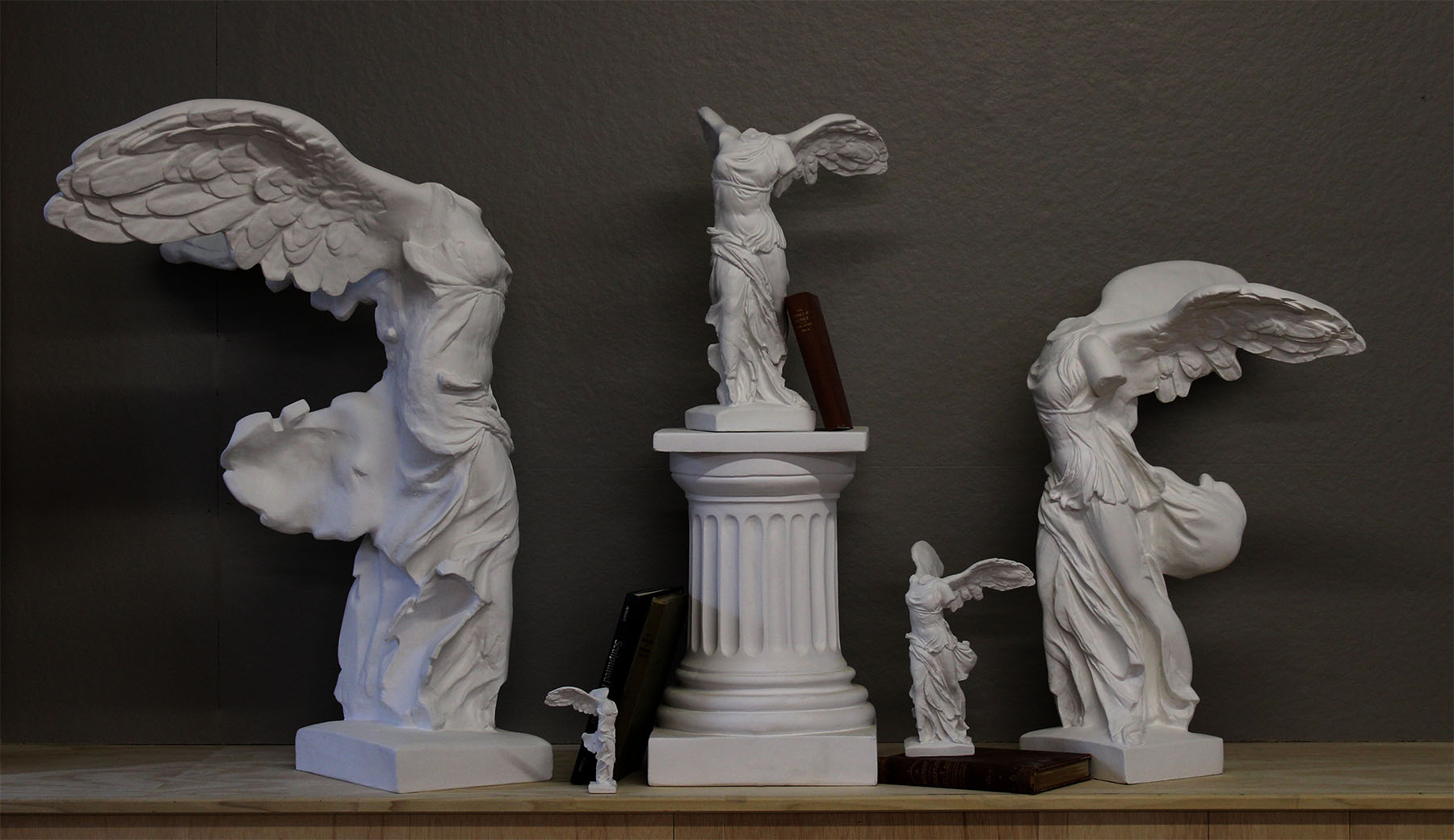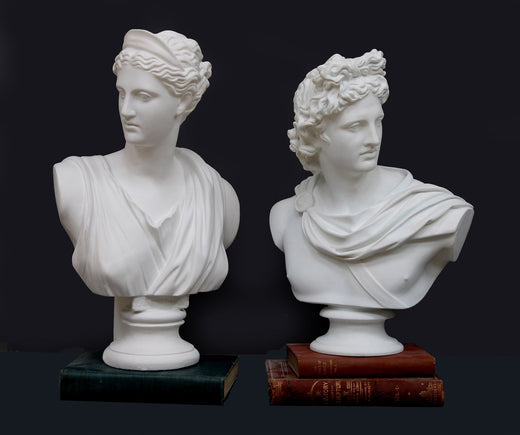Lino Giust was born in 1928 and emigrated to Boston from Fontanafredda, Italy. The famous gallery and studio of P.P. Caproni and Brother was located in Boston, and Lino visited the defunct company and building at 1920 Washington Street with his friend Robert Danthine, an interior designer. Though the building and its contents were in shambles, they both saw and envisioned the value of preserving the Caproni legacy, and purchased it in 1971. This started Lino‘s long career of craftsmanship and rebuilding the company. We believe that Robert was only involved for a short time.
In the beginning, the restoration of the Caproni Studio was a total labor of love. He was a terrazzo marble floor installer by trade, which he did full-time. He worked on rebuilding the Caproni Collection at 1920 Washington Street in the evenings and weekends for many years. At one point, when he had the collection back up to about 100 pieces, he actually rented and opened an art gallery which he called the Giust Gallery, on high-end Newbury Street in Boston. That was in the 1970s. Of course, Newbury Street rents were very high, and it was still an era when people really didn’t appreciate the classics as much as even now, because of the popularity of abstract and modern art and sculpture. So although he had many fans at the time, the Gallery probably only lasted two or three years and then he had to close it. And truth be told, having a gallery was probably difficult for him because he would have to sit there all day while it was open to visitors and make the casts during off-hours. He did, although, display his casts in the Caproni Building as well.
I was fortunate to meet Lino around that time in the 1970s. He was friends with my two mentors, Arcangelo Cascieri and Adio di Biccari. I was the assistant of Cascieri and di Biccari at their historic sculpture studio which was a short distance from the Caproni studio and gallery. When I first walked into the Caproni building and saw what Lino was doing and what was left of the Caproni Collection, I had a strong feeling as I did when I had first seen the Cascieri di Biccari Studio, that somehow the traditions should be preserved and carried forth.
When I met Lino, he was very cordial and nice to me. I could tell that he was an old-world craftsman and a proper Northern Italian in that he was very formal. Thus began our friendship and our working relationship in the craft. It was a great experience working with him. Though a lot of the type of work he did was done also at the studio that I was trained at and spent most of my time at, some techniques and materials were different, and he taught me a lot.
Though Lino was very much self-taught, he was a great caster. He took a huge amount of pride when he peeled the rubber mold off and pulled the cast out. It was always such a perfect cast. There was hardly any work to do; no air bubbles, everything lined up perfectly, just a quick trim and then into the dry room.
Lino did everything for the Giust Gallery. He was curator, marketer, and historian. For marketing, he put advertisements in the New Yorker Magazine. Though he got help with the photography for his catalog, he put them all together and published his own catalog through a printer in South Boston. He was a walking encyclopedia regarding the collection. You could walk through his gallery with him and he'd give you the history of every single piece as well as interesting stories having to do with them, the style, and where they came from.

The cover of the 1976 Giust Gallery Catalog
In order to make the collection more complete, he visited Caproni collections in schools and looked for originals. He restored and made molds of these borrowed pieces in order to expand the collection.
Then, of course, Lino cast all the pieces he displayed and sold—so he was also an expert caster. He was one of the best casters I've ever seen; he really knew plaster. He did all the trimming, the finishing work, the painting, and the patinas himself. He invented many of the patinas we're still using today. He also designed all his own pedestals and mounts.

Page 26 of the 1976 Giust Gallery Catalog
He also did all his own packing and shipping. He never used a stock box. He bought sheets of cardboard and cut a cardboard box for the exact size needed for every piece that he shipped—like origami. If the pieces were bigger, like a panel from the Parthenon Frieze, he did all his own woodworking and crating.
He was really a one-man band as they say. It wasn’t until the very end of his career, when I had known him, that he accepted a couple of younger assistants to help him. But that’s when he was planning to retire soon anyway.
Kathleen, my wife, and myself were fortunate to keep his legacy alive; we purchased the collection from Lino in 1991. We have strived to keep Lino’s pride of craftsmanship and perfection alive. This is the level of craftsmanship that we hope to continue for generations to come.
-Robert Shure


Comments
Bob, thank you for sharing your memories of Lino and Audva. They were wonderful people. They both passed away in recent years. Bruno still lives near Boston.
-Robert
Lino and Audva were our landlords from ‘72 to’74. We lived in their house on the first floor while they lived on the second floor with their three boys. Eileen and I came with two kids and had out third there while I was doing graduate work at BC. Our oldest Brian had a play mate in Bruno, their youngest. Lino and his wife were such great people and so accommodating…especially when at times we were not ready with the rent. We think about them often and are so great full to have had them in our lives. We will continue to treasure the Caproni reproductions that we continue to display in our kitchen. Hope all is well with the Giust family.
Thanks for sharing, Iula! We’ll make a note of the circumstances of Lino’s immigration in our archives.
My mother Elidia Giust was 1st cousin to Lino and his sibblings! They grew up together and mum used to tell the story of how when his mother died his father decided to immigrate to America.
Lino actually gave mum 2 of his angle sculptures which i now have here in Australia
Is Lino alive?
He used to be my landlord many years ago..
My best wishes to him if he exists.
Thank you,
andrew levine
former tenant on Glade Ave
Thanks, Todd. We would love to talk about the possibility. We’ll send you an email. -Robert
Thank you, John. – Robert
Thank you for your story about the collection and Lino. When I read that Lino rounded out his collection by sometimes borrowing pieces in order to make a mold, I thought you might be interested in making a mold of the Agrippa mask that I recently bought from an antiques dealer in NY. Your current collection does not have this piece. The mask has a Caproni imprint on the bottom. The Agrippa head is a popular Bargue drawing that beginning students at the Academy of Realist Art will copy. I drew that Bargue plate myself, and I was delighted to find a Caproni mask of it. If you are interested in using it to make a mold, I would be happy to let you borrow it. I think it is great that you are keeping the flame alive.
Thanks,
Todd M
I enjoyed reading about the “Giust” link to the Caproni collection. I own four pieces from your gallery which have provided many hours of drawing enjoyment. I’m a former dental lab tech who worked with plaster / lost wax technique and I was fascinated when I visited your gallery a few years ago! Thanks for continuing the tradition.